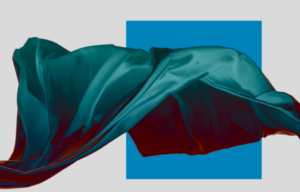Living Textiles: Harnessing the Power of Nature to Transform Our Definition of Sustainable Materials
As the need for sustainable textile alternatives intensifies, we take a look at how Spring/Summer 21 trends reflect this shift in the cultural mindset.
As WGSN reports, the Spring/Summer textile trends have a significant focus on responsible production and materials. One way some designers have achieved this while maintaining a fashionable aesthetic is by using fabrics that emulate the planets beauty, using its resources harmoniously rather than selfishly. Progressive developments in resourceful bio and renewable materials, as well as responsible production, lead to an emphasis on fabrics with adaptability and lightness.
Bio-Led Surfaces
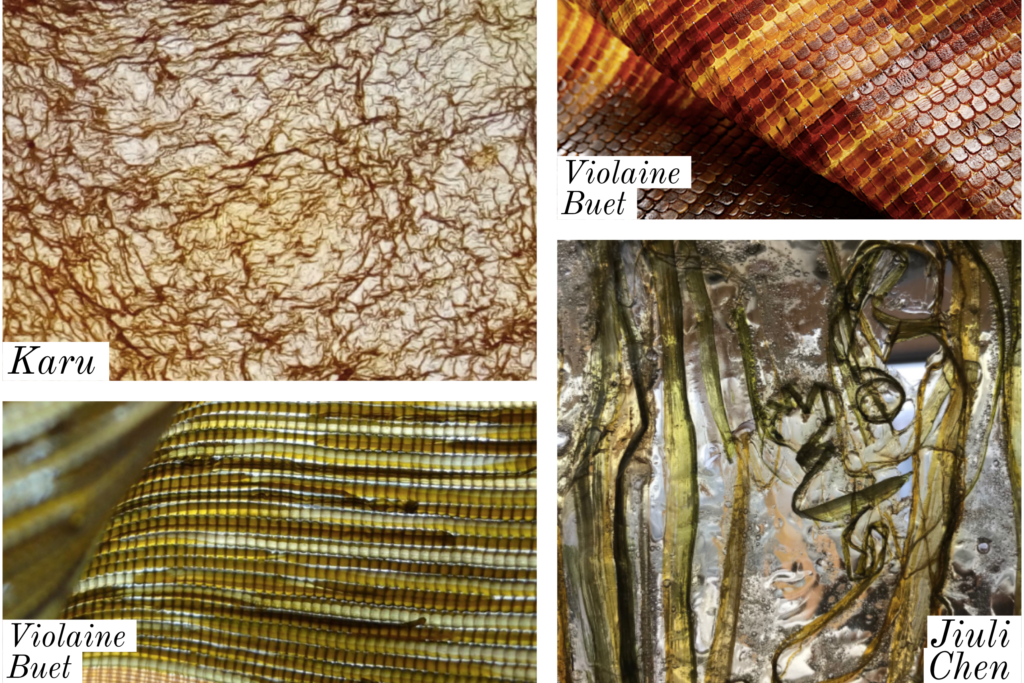
Developments in renewable micro-cultures and bio-materials such as algae will see new yarns, fabric construction and finishes for outerwear use. Natural rubber and biodegradable cellulose coatings provide waterproof quality, and bio yarns made from sources like kelp provide an eco-friendly alternative to synthetic lightweights.
Opalescent Glass Sheers
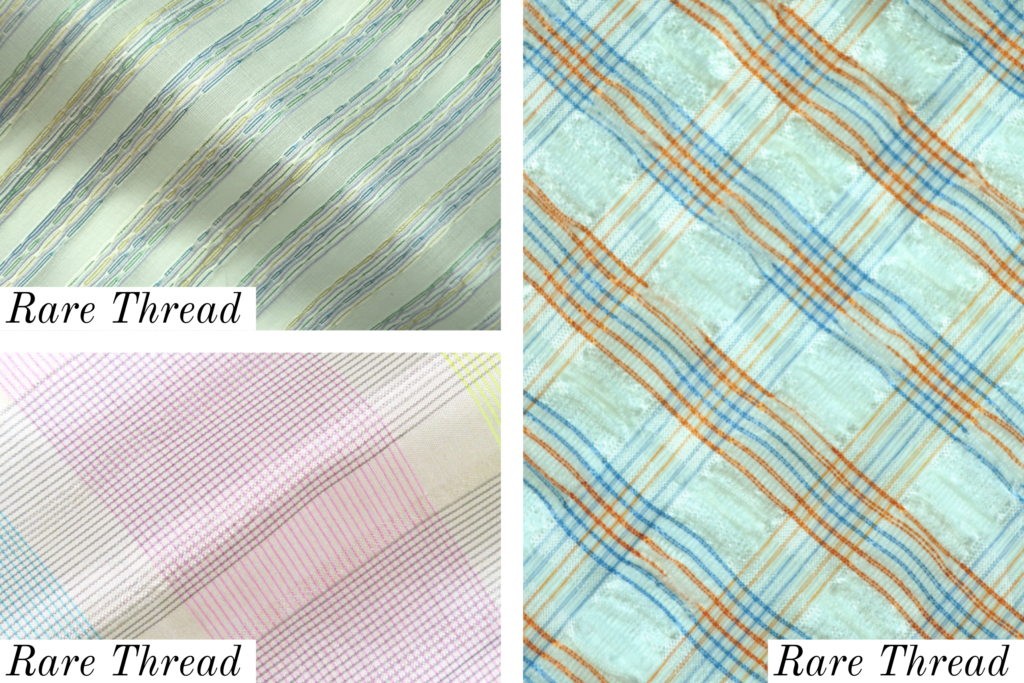
Mesmerizing effects play with opacity and color-shifting bio-iridescence and add flare to formal and occasion shirting weights, soft accessories, and intimates. Checks, stripes, seersucker and heat-retracted surfaces create movement, tactility and distortion inspired by rippled glass and reflections on water. Made more sustainable by using peace silk, organic cotton organza and chiffon warps, along with responsibly sourced viscose, iridescent recycled polyester yarns and opalescent cellophane for weft textures.
Raw Shimmer
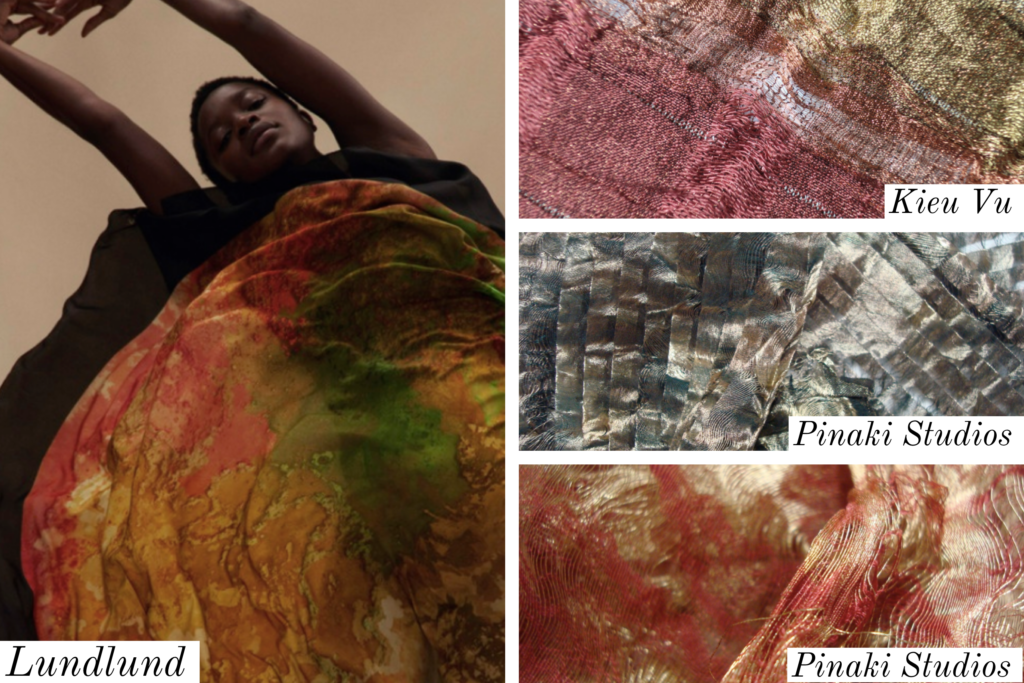
Inspiration from geological forms and textures creates a precious, raw and elemental aesthetic. Designers focus on texture over pattern with retracted surfaces, irregular pleats and sporadic yarn floats that capture a raw, hammered effect. Uneven reed marks create irregular contrast between dense and gauzy sections, elevated with ombré stripes for a burnished look. Metallic yarns mixed with silk, cellulose filaments or high-twist ecological cottons to reduce shine ensure a luxe hand feel, making this a unique material for formal and occasion-wear, or even jackets.
Adaptable Proofs
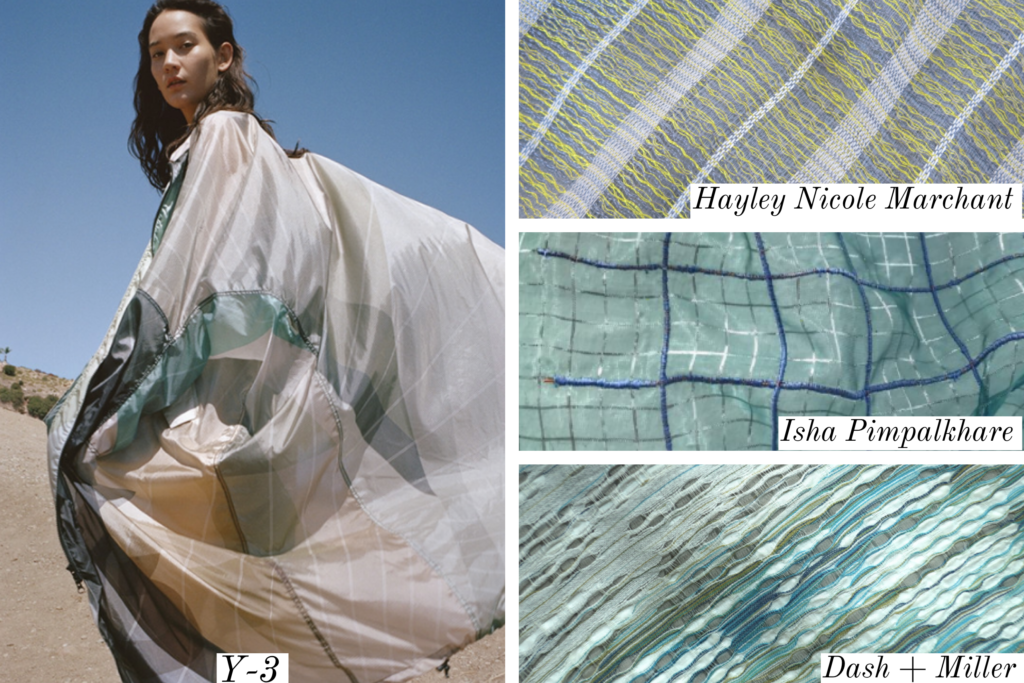
Summery technical fabrics are enhanced with new engineered construction that uses ripstop structures with aerated micro-eyelet mesh, leno and deflected weave constructions to amplify breathability. The textile is made sustainably with recycled nylon and synthetic filament organza, giving it parachute-like weight with added durability perfect for outerwear and athletic apparel. Designers play with color, pattern and opacity to give the textile a more summery appeal.
Dark-Water Moiré
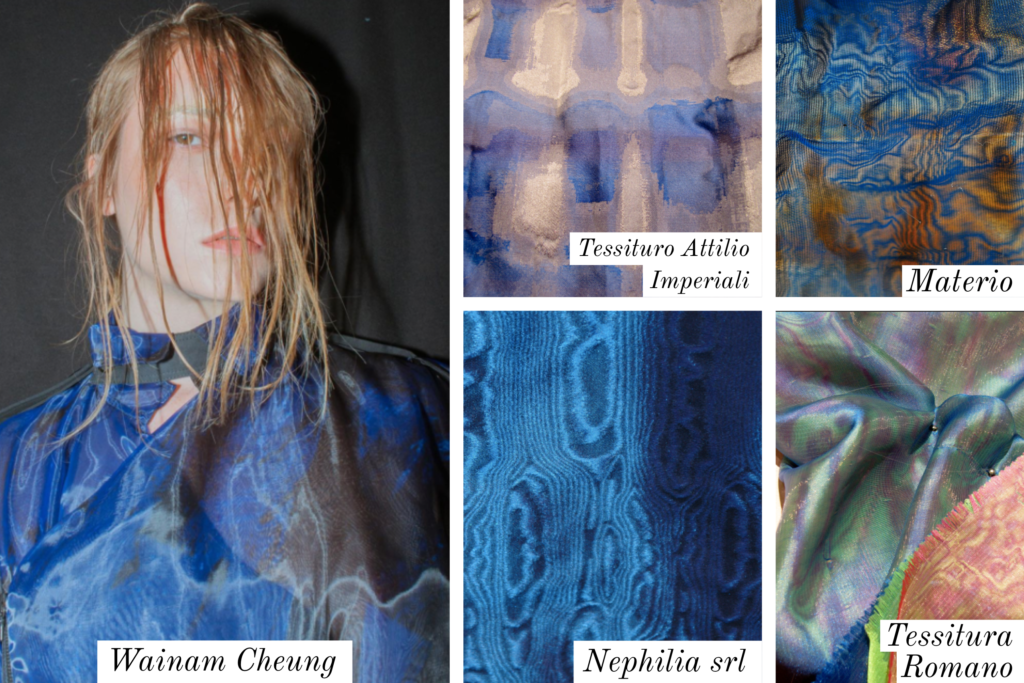
The ocean is a key inspiration for the living textiles trend. Designers celebrate it with undulating textures and patterns that emulate watery surfaces. Puckering and seersucker weaves using eco-synthetics, rayon, lyocell, or high-twist fine organic cotton are enhanced by classic calendared moiré or ombre jacquard to create ocean-like patterns and colors.
Dichroic Aluminum
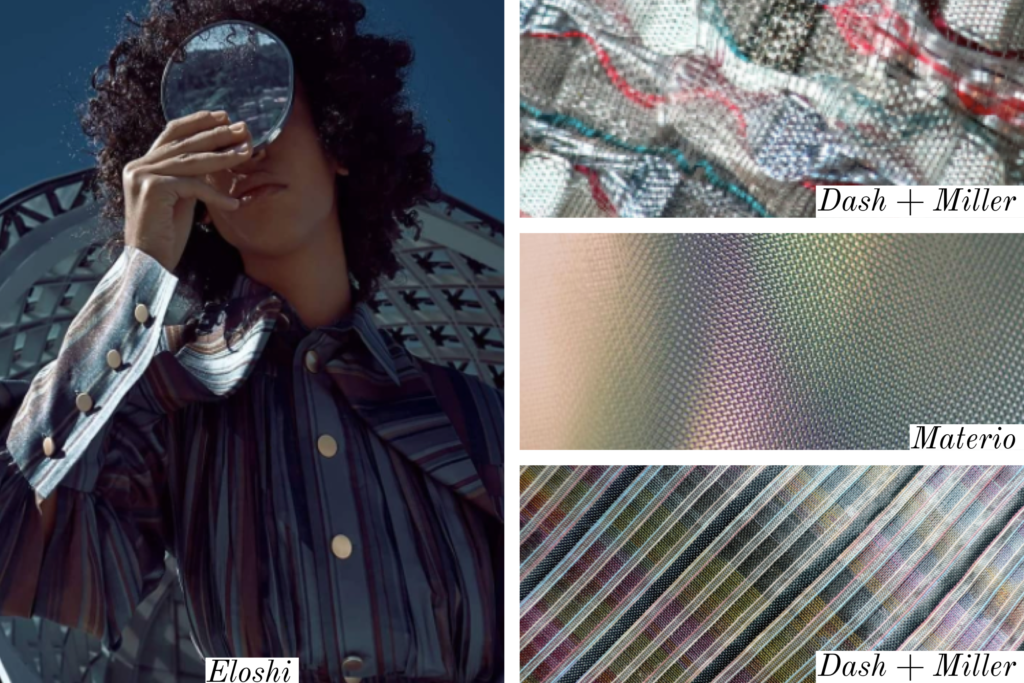
Aluminum serves as the inspiration for futuristic yet elegant metallic fabrics, fusing color-shifting fluidity with discreet structures to create subtle illusory effects. Subtle metallic yarn inclusions are added to space-dyed micro-rib cotton shirting and dress weights, and dichroic cellophane is mixed with metallic yarns in deflected weave constructions to capture color in motion for fancy dress and separates qualities.
Enigmatic Indigo
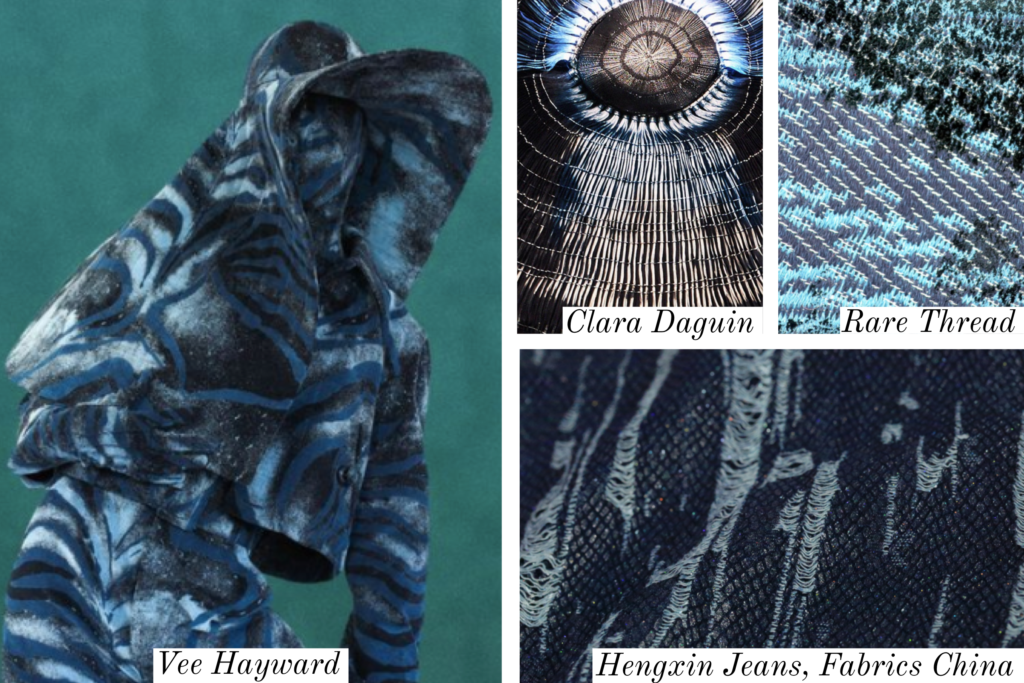
Traditional indigo dying is used to capture the intensity of the ocean, with natural inky hues and enigmatic textures and patterns inspired by the ebbs and flows of the ripples and waves. Recycled denim can be renewed using distorted tie-dye techniques made into all-over prints to avoid using bleach. Combined with construction effects like exposed ladders and floats, this creates interesting textures and mysterious patterns.
Key Takeaways
The Spring/Summer 21 textile trends place emphasis on weightless developments across categories. Textiles will celebrate nature in aesthetic and production, with a focus on technological innovations that promote responsible production practices. Bio-iridescence will be a major color and pattern trend, giving metallics a new opulence.
Image Sources: Noted in image captions. Source: WGSN Sustainability & Innovation: Bioactive Materials Report

